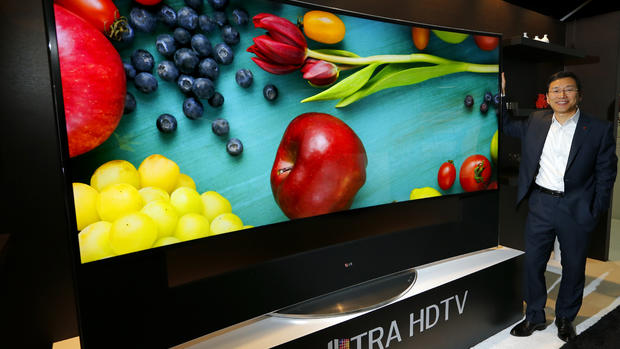CES 2015: The top tech you don't need
The final day of the International Consumer Electronics Show wrapped up in Las Vegas Friday, putting to bed the annual technology smorgasbord. As the throngs pack up and head home with visions of drones dancing in their heads (literally: dancing drones, because that was a thing), what will we remember about the show?
More than anything, we'll think fondly, perhaps awkwardly, back to all the things we would never, ever buy. Because they're too expensive. Or too goofy. Or because they, by trying to push the bounds of technology, push the bounds of reason.
As distinguished technologist Walt Mossberg wrote this time last year on Re/Code, CES is notwhat you think it is.
"Lots of tech aficionados, investors, and just plain citizens imagine that CES is the place where the most important, trend-setting, society-impacting new tech products are unveiled. It isn't," he wrote. "To read or watch some of the media coverage of the show, it might seem as though the entire tech and electronics industry worked all year to prepare sensational new things just to launch at CES. They don't."
Yes, the convention is a coming out party for many thousands of new products, but it's also a venue for parading items already basking in the light of day, as well as those that may never see it. A car that is so autonomous that the driver's seat doesn't even face forward is cool -- really cool -- but don't go looking for one in a showroom anytime soon. Or not so soon, for that matter.
It's also a hodgepodge of the strange, the silly and the downright scary.
And in celebration, we bring you just a few of the choice picks we didn't wish we could bring home from the show.
An Internet connected assault weapon
Texas firearms maker TrackingPoint's ShotView app for iOS and Android lets you live stream your kills.
"Hunting and shooting sports are now part of the Web fabric. With this new technology, friends and family are virtually transported and immersed in exotic and exciting hunts," Danielle Hambleton, TrackingPoint's vice president of marketing said in a press release. "Hunters can now share the thrill of the stalk and the excitement of victory in real-time."
We'll stick to Big Buck Hunter, thanks.
An Internet connected toothbrush
OK, so it's not as intense as a semiautomatic, but Oral-B's PRO 700 SmartSeries toothbrush is another item we don't feel we need in our IoT arsenal. The Bluetooth brush gives you real-time feedback on your dental hygiene regimen, telling you if you missed a molar and warning you if you brush too hard.
CNET reports that the toothbrush should launch in late February for around $219. Move that decimal point over a couple spots, and maybe we'd consider it. Otherwise, we'll keep caring for our enamel analog-style.
1:1,500 wheel-to-dollar ratio
Of all the scooters and skateboards we wouldn't want to be seen riding on the streets of New York, the motorized Onewheel is probably one of the coolest. But neat as it is, $1,500 for a deck with one wheel just feels like bad value.
Electric eye on the sky
CNET's Brian Bennett says the BloomSky is a device for meteorology buffs. The personal weather station measures "environmental staples such as temperature, humidity, and atmospheric pressure." But there's more: "The $169 (which converts to £100/AU$180) BloomSky gizmo is built to measure UV light and notice the start of any significant precipitation." Not being meteorology buffs ourselves, we're happy to just stick a hand out the window, for free.
Sleep Number bed for kids
We don't remember chronic back pain or insomnia being a hot topic on the playground. And so it's hard to grasp how any child would need the $1,000 Sleep Number SleepIQ Kids Bed, or its breathing and heart rate monitoring. The associated app's monster detector is a nice touch, though.
TVs that cost more than cars
The Samsung bendable SUHD TV and LG's 4K curved LED LCD TV are both 105 inches and cost around $100,000. They both look amazing. But if you had a hundred grand lying around, wouldn't you rather spend it on something with a 560-horsepower engine that you can drive than a giant TV with 560 channels you don't want to watch?
A belt that adjusts for bloat
The Belty was designed to help track a health and fitness metric often overlooked by other wearables: Your waist size. Waist circumference is an important measure of health (and diabetes risk, among other things), but we're not sure that a smart belt that lets out when you overeat is the right approach. The shame of having to manually move to the next notch seems like a much more powerful motivator.
